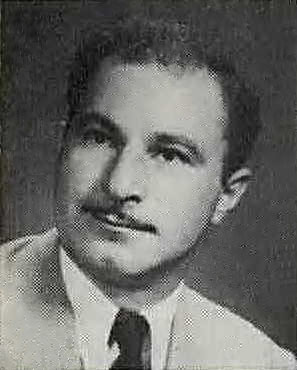
|
|
|
|
|
|
CONTACT US |
|

 |
|
||||||||||||
 |
|||||||||||||
|
|
William Kam was born May 4th, 1922, in Brooklyn, New York. He enlisted into Army service on July 5th,1942 from Manhattan, New York . William's basic training was at Camp Tocca, Georgia. He completed his parachute training at Fort Benning, Georgia, earning his wings on November 18th 1942. Private William Kam was initially assigned to the 506th Parachute Infantry Regiment, 101st Airborne Division at Camp Mackall, North Carolina. While stationed there, he volunteered for the 505 Parachute Infantry Regiment, 82nd Airborne Division.
Private William Kam first appears on 505 Parachute Infantry Regiment, 3rd Battalion, Headquarters Company payroll records in July of 1943. We feel he may have been assigned to either the 447 or 448 EGB replacement group.
He made all four combat jumps with the 505 Parachute Infantry Regiment. Sicily, William's first combat jump, happened on the night of July 9,10, 1943. It was a night with winds approaching 30 knots, causing his chute to swing like a pendulum. When William landed, he hit the ground very hard, injuring himself badly, braking bones in both feet. He ended up in a hospital in Oran, earning a Purple Heart.
William returned to the 505-PIR in early September after his hospital stay in Oran. On the night of September 14,15, 1943, William made his second combat jump into Paestum, Italy.
After duty in Naples, Italy, the 505-PIR left there by ship (SS Frederick Funston) on November 18th and docked in Oran for a few days. Leaving Oran, the SS Funston travelled through the Straits of Gibraltar to Belfast, Ireland arriving on December 9th 1943. In early February 1944, the 505-PIR crossed the channel and landed in England setting up camp at Quorn, Leicestershire.
On the night of June 5,6, 1944, The 505-PIR made their third combat jump from an airfield in England. As the C-47 formations approached the Normandy coast, they encountered heavy cloud banks and fierce anti-aircraft fire. William said that the pilots broke formation and scattered. As a consequence, his unit was dropped outside their original drop zone. Eventually he made his way to St. Mere Eglise, remarking that it was horrible to see all the crashed gliders and dead troops. It was three days before the troops that landed on the Normandy beaches to reach them at St. Mere Eglise. After 33 days of combat the 505-PIR returned to England.
William's 'next adventure' as he called it (his fourth combat jump), was enplaning in full battle array, into the C-47 taking him Groesbeek, Holland. He says that this jump occurred on Sunday, September 17th on a bright sunny afternoon, nothing like the combat jumps of Sicily or Salerno. He remarked that it was like a practice jump at Fort Benning, Georgia. Their objective was the town of Groesbeek, a short distance from Nijmegen. The town was quickly taken with very few casualties. While the 82nd Airborne Division fulfilled all of its military objectives in Holland, William notes that the failure to save the British at Arnhem, was the fault of Field Marshall Montgomery. General Ridgway also faulted the British 30 Corps. for not saving the British 1st Airborne Division at Arnhem, because they were not willing to take chances while moving through German held territory.
On November 11th 1944 the 505 Parachute Infantry Regiment left Holland for WW-I barracks at Suippes, France. The British took over defensive positions in and around Nijmegen that were held by the 505-PIR. At this time William was sent to a tent hospital in Leige, Belgium for medical treatment.
In early December 1944, William returned from the hospital at Leige, Belgium. Days later, on December 17th at 22:00 hours, the 505 Parachute Infantry Regiment was put on alert. The next morning at 8:00 hours the Regiment left in semi-trailer trucks for Belgium. This was the beginning of the Battle of the Bulge for the 505.
Most of the paratroopers had no idea of where they were going. William said it was dark, cold, wet and in a forested area, so he really didn't know where he was. From there on he fought as infantry.
On February 5,1945, Private First Class William Kam was admitted to a hospital as a non battle casualty. He was sent to the United States on June 5,1945 for further medical treatment.
Private First Class William Kam was Honorably Discharged from Rhoads General Hospital in Utica, New York on January 30th,1946.
William married in 1951 to the love of his life Lila, and they raised three boys.
Graduated from the University of Arizona with a degree in Geology in 1954 (GI Bill). Got a job with US Geological Survey as a Groundwater Hydrologist. Worked in Arizona until 1968 before he took a promotion that took him to Trenton, New Jersey. He retired in 1980.
Military Awards
Purple Heart Medal
Good Conduct Medal
American Campaign Medal
European-African-Middle Eastern Campaign Medal
with One Silver Service Star with Arrowhead.
Honorable Service Lapel Button WW-II
Presidential Unit Citation with oak leaf cluster
World War Two Victory Medal
Combat Infantryman Badge (C.I.B.)
Bronze Star Medal - Issued in 1947 to all holders of the C.I.B.
Private First Class William Kam.
Private First Class William Kam.
William Kam's Honorable Discharge, January 1946.

William Kam's WW-II Shadow Box.

William Kam 1954, University of Arizona Photo.


|
|